The war in Gaza has long since ceased to be a clash of armies, turning into a catastrophe for civilians. Since Israel’s offensive began after the Hamas attack in October 2023, more than 64,000 people have been killed, most of them civilians, and over 160,000 have been wounded. Infrastructure lies in ruins, millions have been displaced from their homes, and access to healthcare, water, and food remains severely limited. International organizations warn that hospitals, schools, and residential areas have become the main targets of the war, leaving Gaza’s residents with no means of protection or escape.
Against this backdrop, doctors at Gaza’s largest medical institutions warn that a new wave of fighting and Israel’s evacuation orders will result in the deaths of thousands of patients who have nowhere else to go.
Doctors and medical staff at Gaza’s largest functioning hospital warn they cannot cope with the influx of wounded and sick if hundreds of thousands of Palestinians begin fleeing the north of the enclave amid Israel’s intensifying offensive.
According to Dr. Mohammed Sakr, head of nursing services at the Nasser Medical Complex near Khan Younis in the south of the strip, there is already too little staff to handle the current flow of patients, while supplies of medicine and fuel are close to exhaustion.
“We have been working under emergency conditions for more than 23 months, and we are all exhausted,” Sakr said in a voice message from the complex on Friday. “Some of us remain in Israeli prisons, others were killed inside or outside the hospital, and some were forced to leave Gaza to escape death—so staffing levels are nothing like they were before the war.”
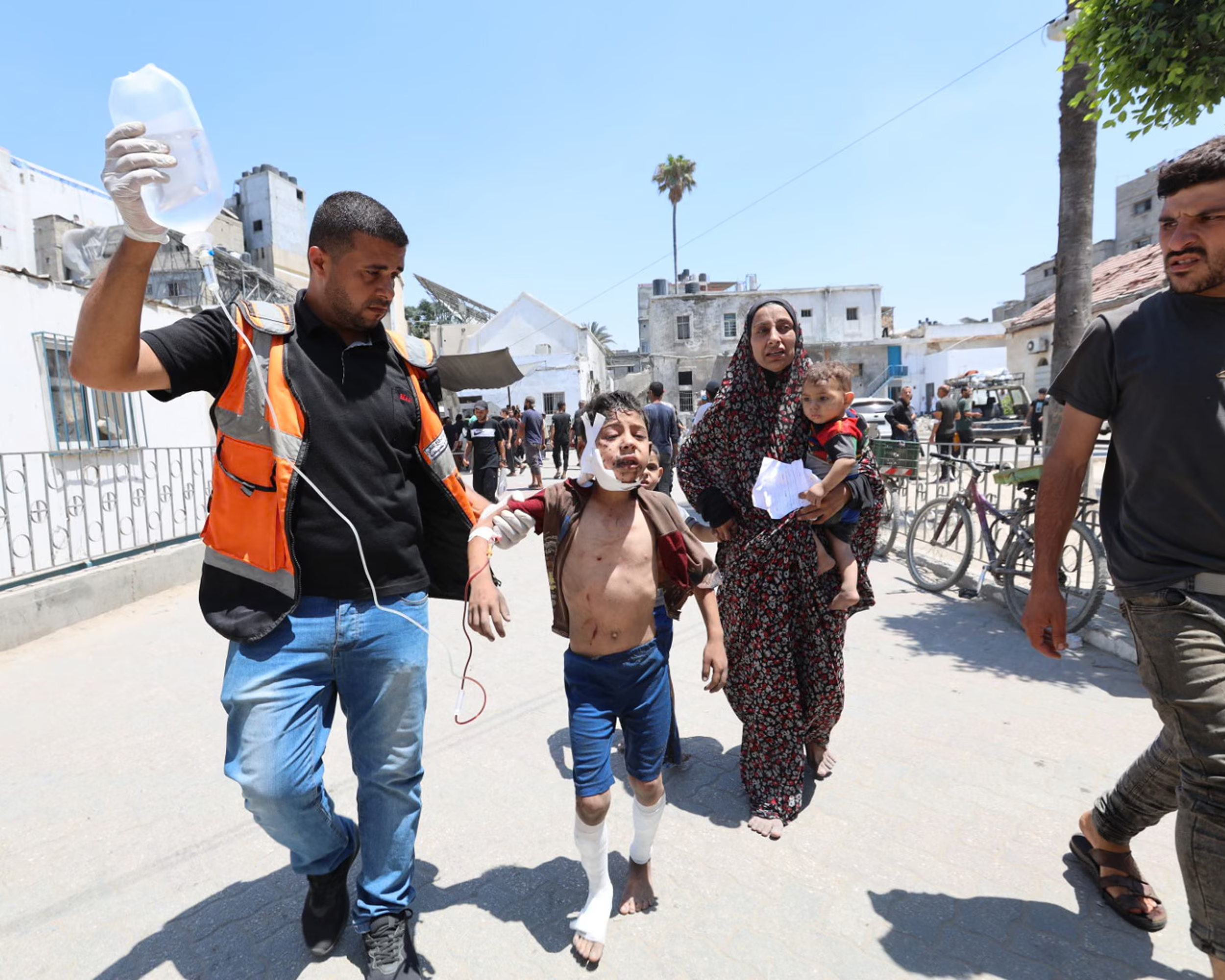
Palestinians with injuries are brought to Al-Ahli Hospital after an Israeli strike on Gaza’s al-Zeitoun district. July 2025.
The prospects for a new ceasefire remain minimal after Israel’s recent strike on Qatar. It was in the Gulf states that militants had been discussing new terms of a deal proposed by Donald Trump.
Gaza’s Health Ministry announced last week that it would not evacuate the city’s two largest functioning hospitals—Al-Shifa and Al-Ahli—and that doctors would not abandon their patients.
The World Health Organization confirmed that its staff will remain in Gaza, despite Israeli military calls for the evacuation of around one million residents and displaced people ahead of a new offensive.
Yet doctors at Al-Ahli, which has been under evacuation orders for weeks, describe the situation as “something beyond human imagination.” They say they may eventually be forced to comply with Israel’s demands. “You see twenty-story towers collapsing in seconds under airstrikes. You see thousands of families fleeing through the streets with their children. You see children being killed, limbs torn apart,” said Dr. Khamis Alessi, a pain management consultant.
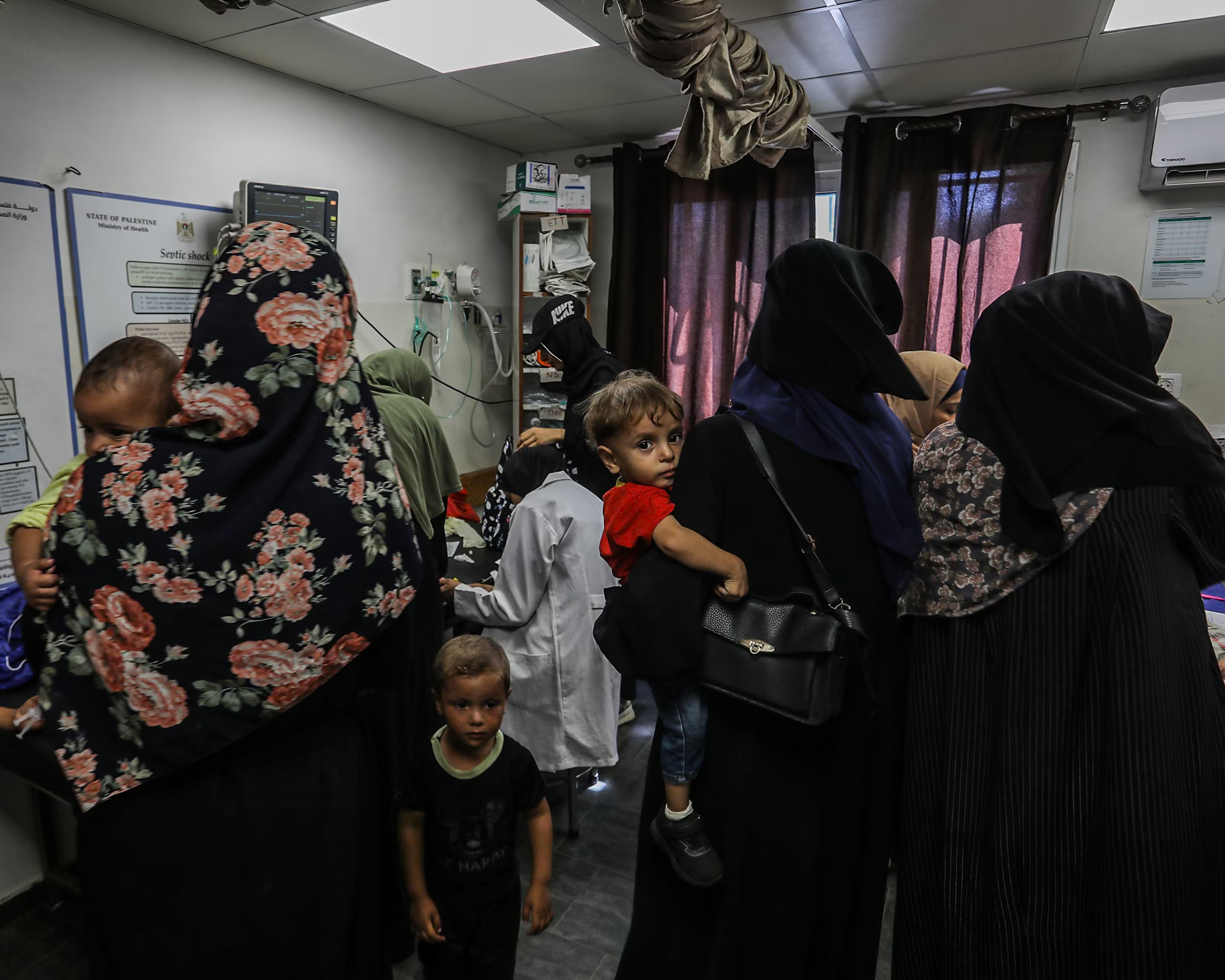
Palestinians wait for medical care at Nasser Hospital.
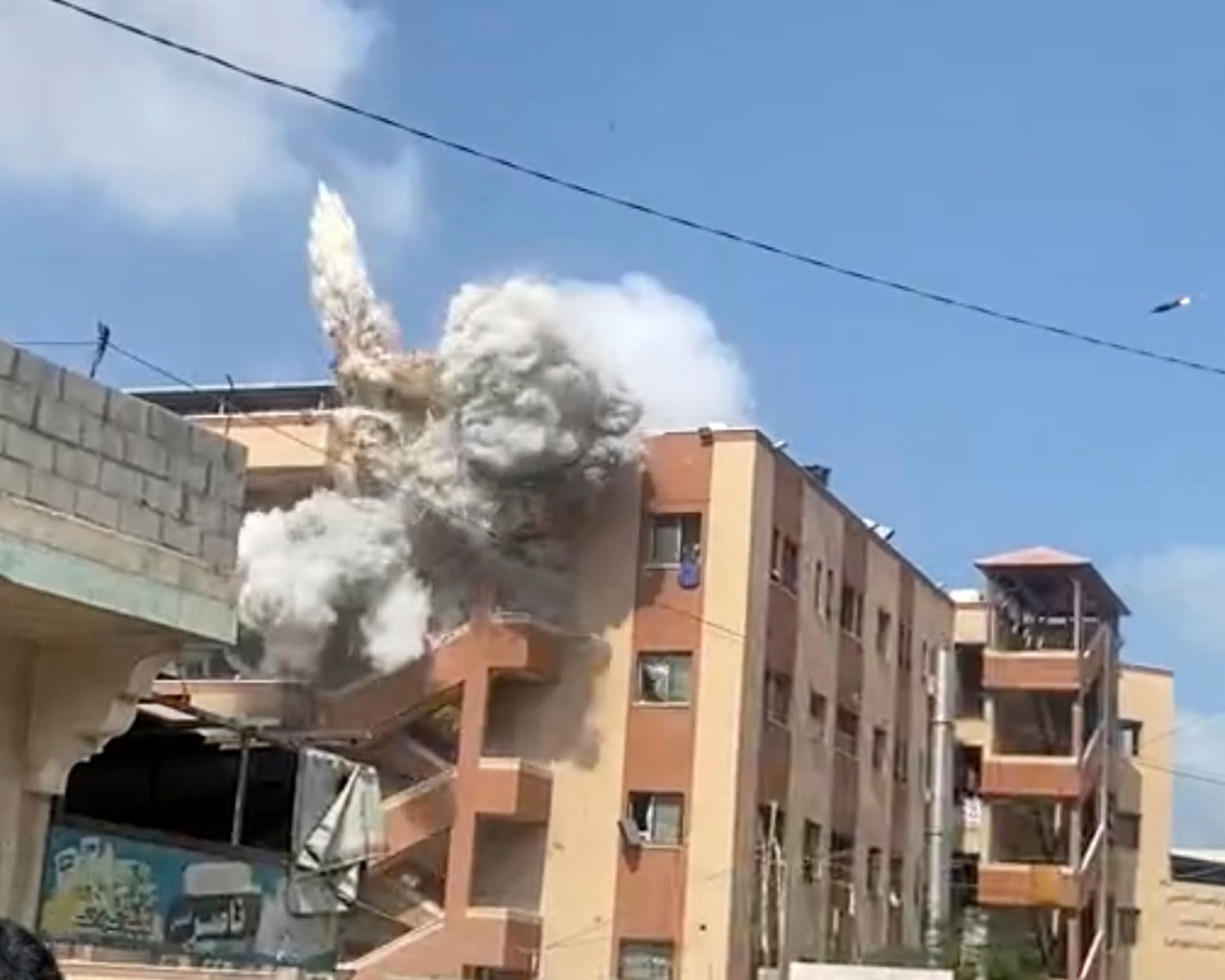
In August, Israeli airstrikes hit the Nasser Medical Complex in Khan Younis.
Al-Ahli now has three times as many patients as beds: on some days it has admitted up to 400 wounded. The clinic has only three intensive care beds, and many severely injured, including those with fractures, are forced to wait for surgery at home. “I hope, I hope we will survive,” Alessi added.
Doctors at Al-Shifa, once Gaza’s largest hospital and now barely functioning, also insist they will stay. “I will take my family south to make sure they are safe, and then I will return to Gaza to continue working at Al-Shifa, God willing,” said one of the doctors.
A Voice Unheard
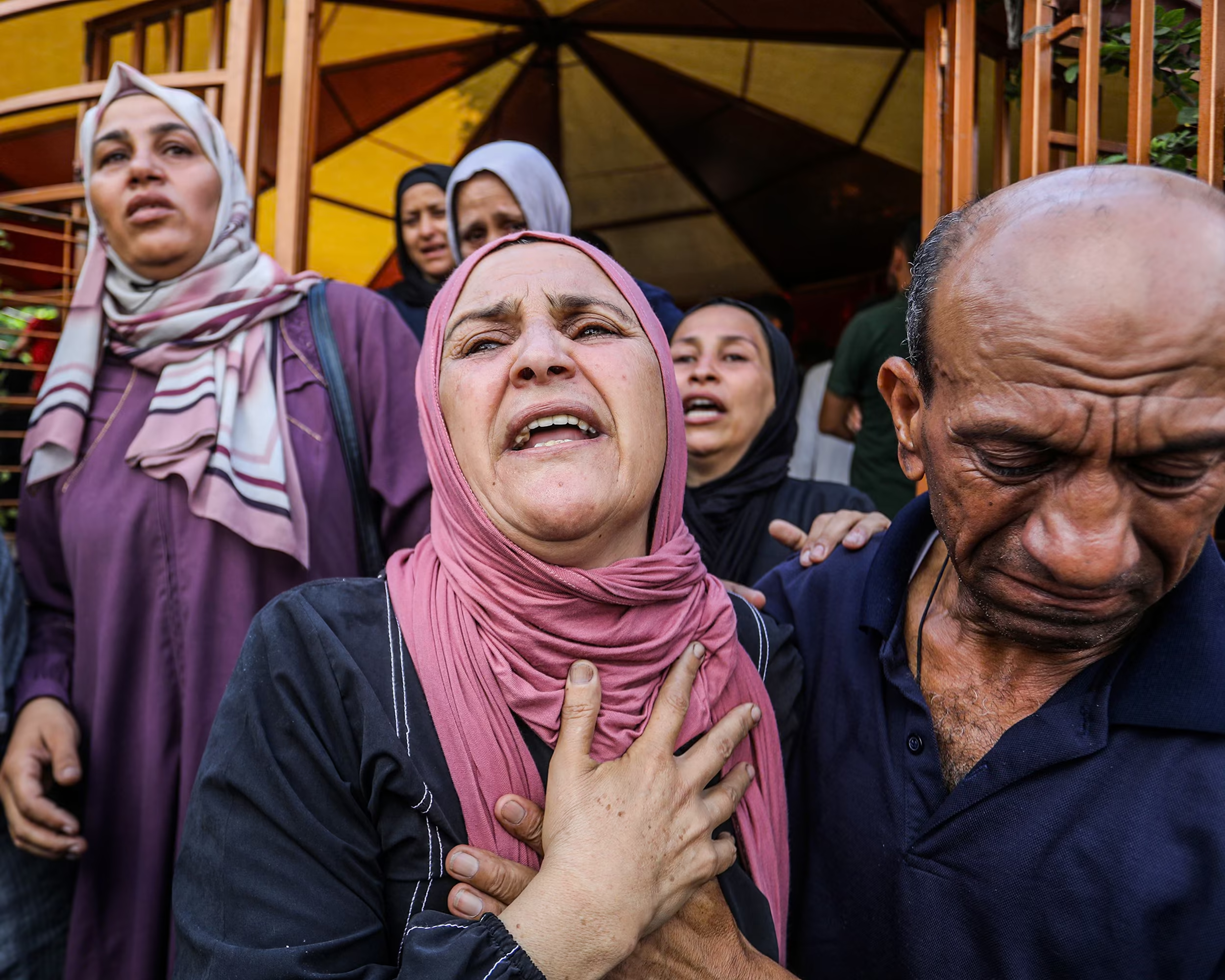
Civilians Are Becoming the Main Victims of Israel’s War in Gaza
Catastrophic Hunger and Mass Killings Increasingly Resemble Genocide

Israel’s Genocide in Gaza Can No Longer Be Justified as Self-Defense Against Hamas
Repression of Civilians and the Aid Blockade Are Turning Israel Into a Global Pariah
At the Nasser Complex, staff confront the consequences of explosions and gunshot wounds every day. “We deal with multiple injuries from shrapnel and bullets. If this were happening in the United States, it would be classified as a mass-casualty event on a daily basis. For me, it is an overwhelming burden, but local colleagues say these are still ‘good days’ compared with last month,” noted Dr. Tipu Khan from California, who arrived as a volunteer with the organization MedGlobal.
According to him, most of the wounded are teenagers and young men injured near aid distribution points run by the Gaza Relief Fund, which is backed by the United States and Israel. “Every morning, like clockwork, 7–10 teenagers arrive with shrapnel or gunshot wounds. Some come in with a bullet lodged in the brain or chest. These are devastating injuries, and three or four of them are either on the brink of death or beyond saving,” he said.
The Israeli military denies deliberately targeting civilians at aid distribution sites and insists it takes every possible measure to avoid civilian casualties.
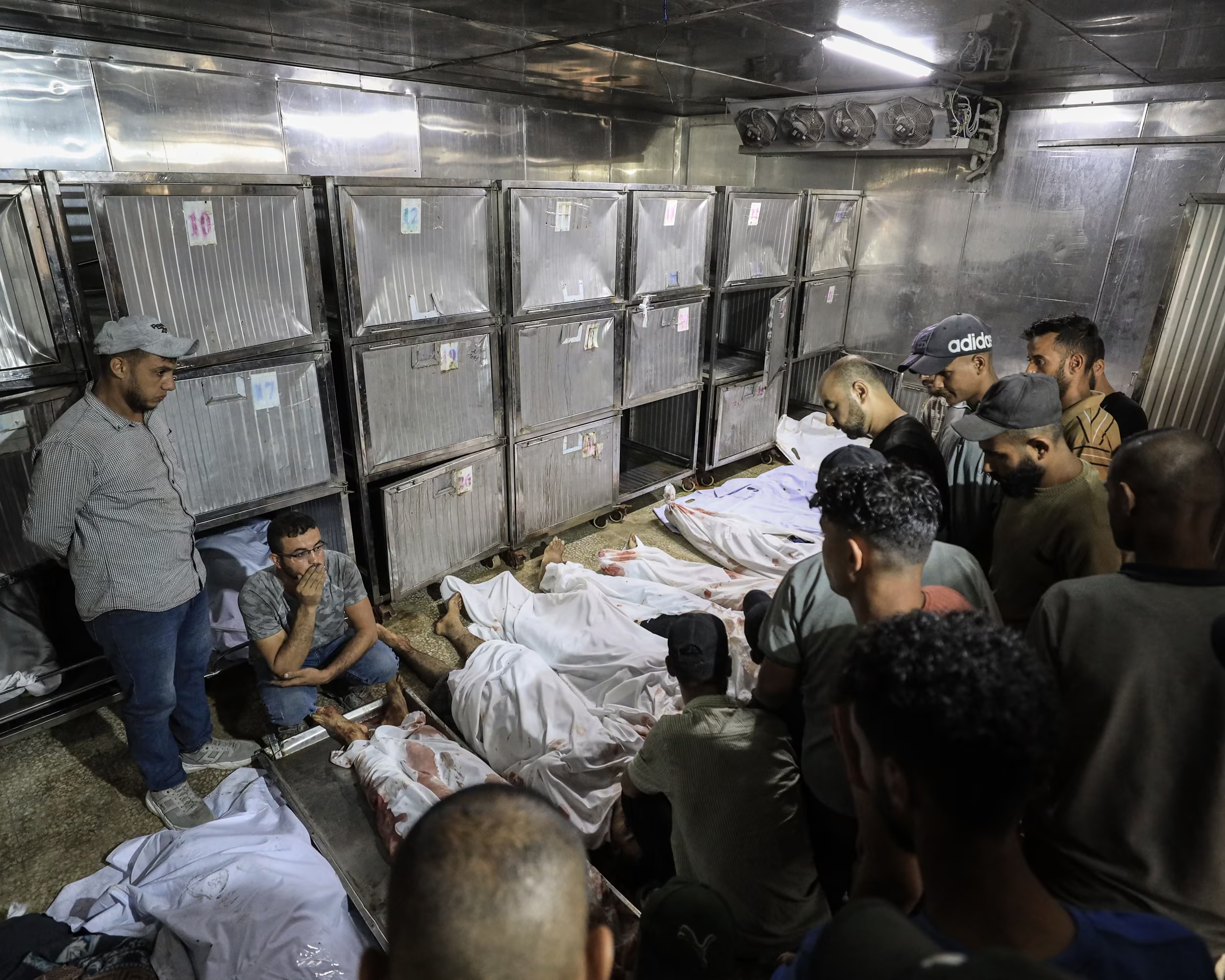
In Gaza, people mourn relatives during a funeral ceremony at Al-Shifa Hospital.
At the Nasser Complex, even basic resources are running out: there is no equipment to measure blood pressure and anesthetics are in short supply. In the hospital, where an Israeli strike last month killed 20 people, including journalists and medical staff, electricity is already being cut in some wards and corridors to conserve fuel for generators.
Dr. Mohammed Sakr fears that this largest medical facility in the south, providing more than half of Gaza’s hospital beds, may shut down if hostilities intensify. “The evacuation of the Nasser Complex would mean the inevitable death of thousands of patients because they simply have nowhere to go. Other hospitals and field clinics in the south cannot take in a thousand inpatients. If evacuation is ordered, very many will die,” he said.
World Health Organization chief Tedros Adhanom Ghebreyesus said last week that the so-called “humanitarian zone” in southern Gaza, established by Israel, “lacks both the space and the infrastructure to support those already there, let alone new arrivals.”
Israeli claims of expanding medical assistance in the south are met with deep skepticism by experts and humanitarian workers.
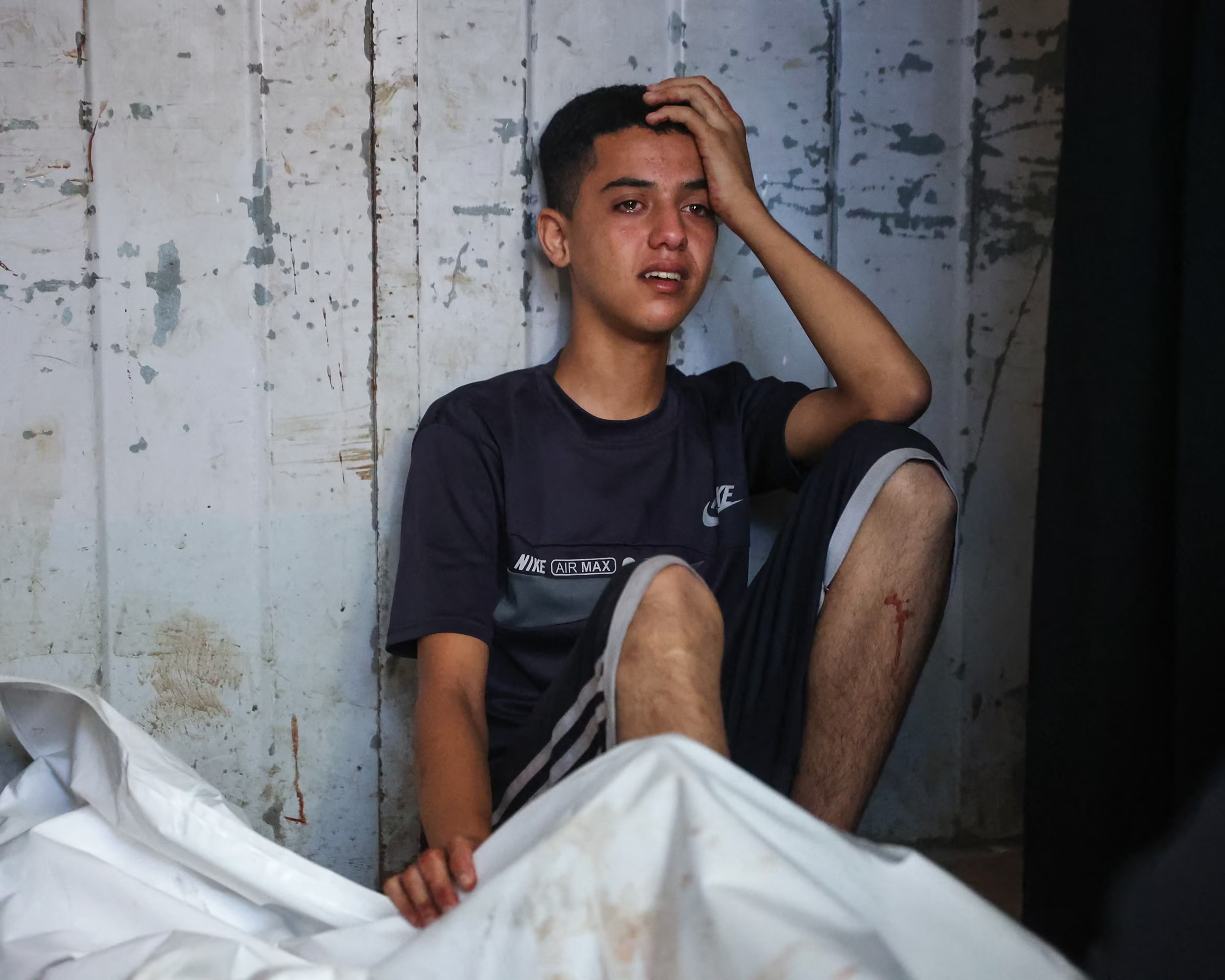
A Palestinian boy mourns beside the body of a relative killed in Israeli strikes on Gaza. September 2025.
Dr. Tipu Khan, who volunteered at the Nasser Complex, said he had witnessed the destruction in Haiti after the 2010 earthquake, but what he saw in Gaza was incomparable: “Haiti was a natural disaster, but the hardest part here is that this is 100% preventable.”
